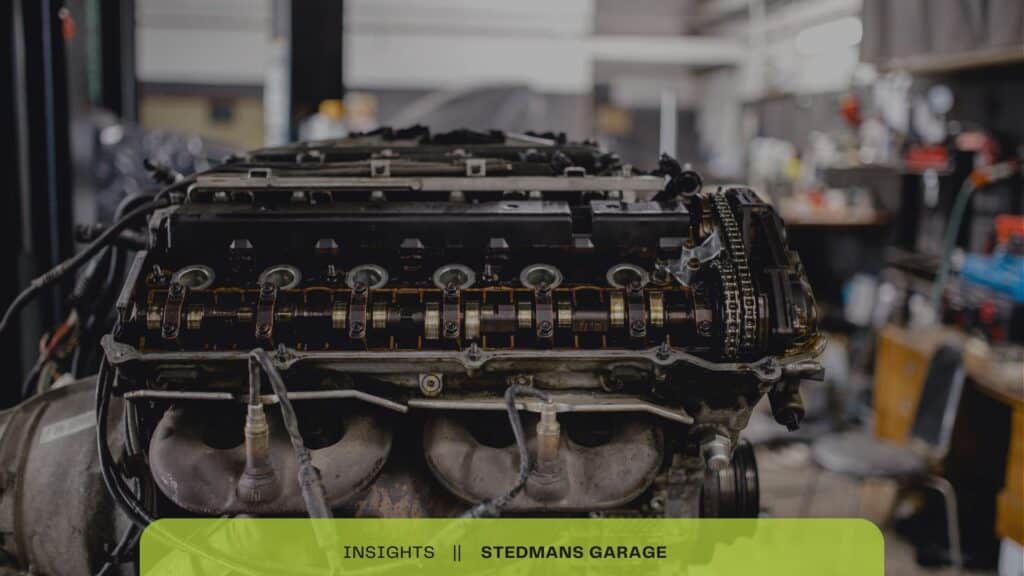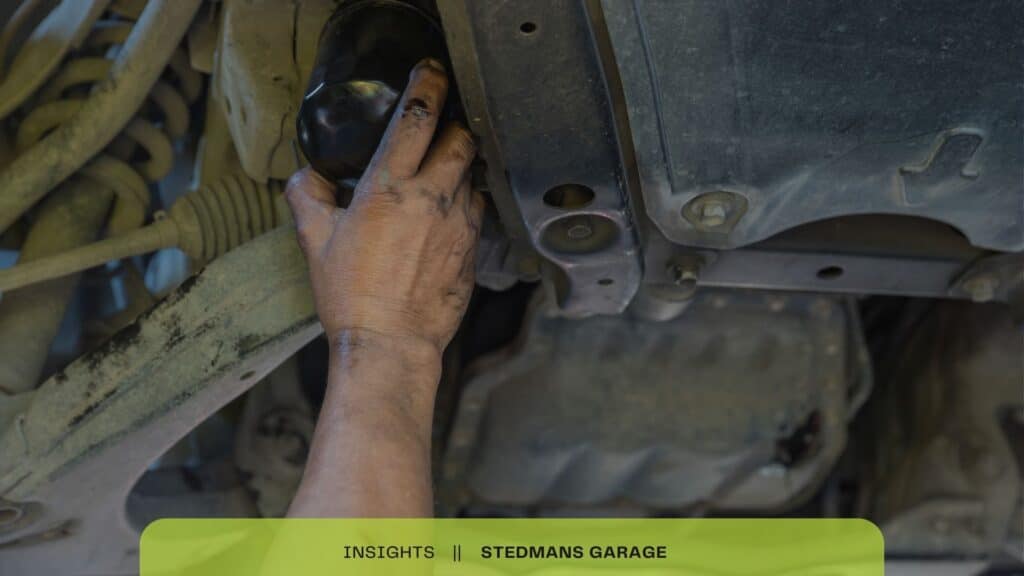Introduction
The VANOS system is a critical component in BMW engines that helps optimise performance and efficiency. By continuously varying the timing of the intake and exhaust valves, VANOS enables the engine to produce smooth power delivery across the entire rev range. When operating properly, VANOS contributes to improved fuel economy, reduced emissions, and enhanced drivability. However, like any complex mechanical system, VANOS is prone to wear and failure over time. This blog post aims to explore some of the common issues that affect VANOS operation in BMW engines. We’ll examine typical symptoms of VANOS problems, diagnose likely causes, and suggest both DIY and professional repair solutions.
VANOS system in BMW engines
The VANOS, variable valve timing system, is critical to achieving the trademark smooth power delivery of BMW engines. By incrementally adjusting the timing of the intake and exhaust valves, VANOS optimises engine performance and efficiency across the entire rev range. At low rpm, advancing the valve timing allows more air into the cylinders for better torque and acceleration. At higher rpm, retarding the timing increases power output. This means the engine can produce strong torque down low while still revving freely to high rpm. The end result is an exceptionally broad power band that delivers accessible performance. VANOS also enables the engine to run leaner for better fuel economy.
Exploring common VANOS issues
While VANOS delivers significant performance benefits, it is also prone to certain failure modes over time. Issues like oil contamination, solenoid faults, and wear of internal components can all affect system function. The goal of this blog post is to arm BMW owners with the knowledge to identify symptoms of VANOS problems early on. We’ll explore the root causes of common VANOS faults and suggest both DIY repairs and professional servicing solutions.
Identifying BMW VANOS Issues
BMW’s VANOS system is an ingenious piece of engineering that optimises engine performance by continuously adjusting the camshaft timing. However, like any complex mechanical system, the VANOS is prone to certain issues over time. Identifying common VANOS problems early is key to restoring smooth engine operation and preventing further damage.
Rough Idling and Misfires
As the VANOS components wear out or get contaminated with metal shavings or dirty oil, the system can no longer quickly and precisely adjust cam timing. This leads to rough idling, misfires, and hesitation as you accelerate. The check engine light may also turn on indicating cylinder misfires. Left unchecked, the misfires can quickly foul spark plugs and damage catalytic converters.
Loss of Power
Faulty VANOS operation hampers the engine’s ability to “breathe” efficiently at different speeds. You may feel a distinct loss of low-end torque and power when trying to accelerate from a stop. This not only impacts performance but also makes the vehicle potentially unsafe in situations requiring quick throttle response – like changing lanes or merging on highways.
Dashboard Warning Lights
Modern BMWs have onboard diagnostics that monitor VANOS function. Expect to see check engine and reduced power warning lights if the cam timing is off or the system is malfunctioning mechanically. Typical fault codes pointing to VANOS issues are P1520, P1523, P1397, 2A82, and 2A87.
Reduced Fuel Economy
Finally, poor cam timing from a faulty VANOS prevents optimal fuel combustion. You may notice an increase in your fuel mileage as the engine struggles to run efficiently. Smell from unburnt fuel and black smoke from the exhaust are also signs of engine issues.
Common Causes of BMW VANOS Issues
The VANOS system in BMW engines is critical for optimising performance and efficiency. However, like any complex mechanical system, it can develop issues over time. Three of the most common causes of VANOS problems are oil contamination, wear and tear, and faulty solenoids.
Oil Contamination’s Impact
Oil is the lifeblood of any engine, including the VANOS system. Contaminants in the oil, such as dirt, debris and sludge can clog up narrow oil passages and prevent smooth operation. This starving of critical components for lubrication and hydraulic power can lead to increased component wear, sticky vanes, and outright mechanical failure.
Using degraded or old oil, or improper oil change intervals, are common ways oil contamination issues arise. Catching oil problems early with regular oil analysis can help avoid downstream issues.
Wear and Tear Issues
The VANOS unit contains many precision components like small vanes, actuators, shafts and sensors. After tens of thousands of miles of operation, these pieces suffer wear and tear.
Excess vane clearances from use reduce system efficiency. Shafts and actuators can develop too much slack, throwing off cam timing. Position sensors also drift out of spec, confusing the engine computer. Like an old, stretched out rubber band, worn components lose the precise tension needed for proper operation.
Faulty Solenoid Impact
The VANOS system relies on electrical solenoids to control oil flow and actuate vanes. These solenoids are essentially electromechanical valves. After years of use, their coils can fail or they can become stuck due to contamination.
A single failed solenoid can disable the entire VANOS system and cause the engine to default to a backup timing map. This results in reduced power, poor drivability, and decreased fuel economy. Solenoids must be replaced in pairs, making it an expensive repair.
In summary, contaminated oil, component wear, and solenoid issues are three of the most prevalent causes of BMW VANOS system failures over time. Paying attention to oil health, changes in engine performance, and monitoring fault codes can help catch problems early.

Troubleshooting BMW VANOS Issues
Regular oil changes
Regular oil changes are crucial for preventing issues with the VANOS system in BMW engines. As contaminants build up in old oil, they can clog solenoids, wear down components, and cause failures. Replacing oil and filters every 5,000-7,500 miles helps flush contaminants and keeps fresh oil circulating to lubricate the VANOS system.
Cleaning and Maintenance
To directly clean and maintain the VANOS system:
- Use a high-quality fuel injector cleaner periodically to clean out carbon deposits
- Check and replace worn solenoid screens that can become clogged with debris
- Use a brake parts cleaner to spray down the VANOS solenoids and wipe clean
- Check the VANOS adjusters and clean out any trapped debris
Performing these cleaning procedures can dislodge debris, free stuck components, and restore proper operation. Preventative cleaning helps reduce failures.
Replacing Faulty Solenoids
When solenoids fail, replacing them is necessary to get the VANOS system working properly again. Symptoms of faulty solenoids include a check engine light, low power, and rough idling.
To replace VANOS solenoids:
- Disconnect the battery and relieve fuel pressure
- Remove air filter housing components to access solenoids
- Unplug electrical connectors from solenoids
- Unscrew solenoid mounting bolts and remove solenoids
- Install new or rebuilt solenoids and reassemble components
While advanced DIYers can perform this procedure, it’s complex. Consulting a professional BMW mechanic is advisable to ensure proper solenoid replacement and calibration.
Professional Diagnosis & Repair
For accurate troubleshooting and repair of VANOS issues, seek help from a professional BMW specialist. They have the in-depth knowledge and advanced diagnostic tools to properly assess problems.
A specialist can test individual components, detect issues unseen to the eye, and provide complete solutions. With professional assistance, your BMW VANOS system will be back to smooth and optimised operation.
When to Seek Professional Help
There are certain circumstances when it is advisable for BMW owners to seek professional assistance with VANOS system issues rather than attempting DIY repairs. If the check engine light comes on with VANOS-specific fault codes, this likely indicates a severe failure of the system beyond routine maintenance. Similarly, if you experience a sudden and complete loss of engine power along with VANOS warning lights, the system may be critically damaged and require professional diagnosis and repair.
Severe VANOS Failures
In addition to warning lights, some other signs of serious VANOS problems include:
- Loud noises from the valve train area
- Rough idle and pronounced engine vibration
- Difficulty starting the engine
- Significant loss of power and performance
These types of major VANOS issues typically require specialised diagnostic equipment and BMW-specific mechanical expertise to properly troubleshoot and repair. BMW technicians have the advanced scan tools, knowledge and skills necessary to accurately pinpoint the cause of complex VANOS faults and make necessary fixes.
Complex Repairs and Maintenance
In addition to major VANOS failures, professional assistance is also recommended for certain repairs like replacing worn-out solenoids or gears. The VANOS unit is integrated deep within the engine and getting to some components requires significant disassembly. Likewise, best practice maintenance like adjusting the timing, cleaning oil passages, or flushing contaminated oil is also best left to the experts rather than tackling in your home garage.
An experienced BMW specialist has the tools and technical understanding to efficiently service even hard-to-reach areas of your VANOS system. This helps restore smooth operation while avoiding collateral damage that could occur with amateur repairs. Protecting your investment with professional VANOS service ensures continued performance and longevity.

Conclusion
The VANOS system is critical to BMW engine performance and efficiency. As highlighted in this blog post, common VANOS issues manifest in symptoms like rough idling, misfires, and power loss. The root causes often stem from contaminated oil, worn components, and faulty solenoids.
Regular maintenance is key – changing oil regularly prevents contamination and cleaning the VANOS components removes built-up deposits. Replacing damaged solenoids also helps resolve underlying issues. When problems persist or repairs seem complex, BMW specialists have the expertise to accurately diagnose and address even severe VANOS failures.
BMW VANOS System
The VANOS variable valve timing system helps optimise BMW engine efficiency across the RPM range. However, it is susceptible to problems from contamination, wear and tear, and faulty components. Diligent maintenance and repairs are necessary to keep this system running smoothly.
Potential solutions covered in this blog include regular oil changes, cleaning VANOS components, replacing damaged solenoids, and seeking professional BMW mechanic assistance when necessary. Being proactive with preventative maintenance and promptly addressing emerging VANOS issues based on symptoms can help BMW owners prevent more severe failures down the line.

